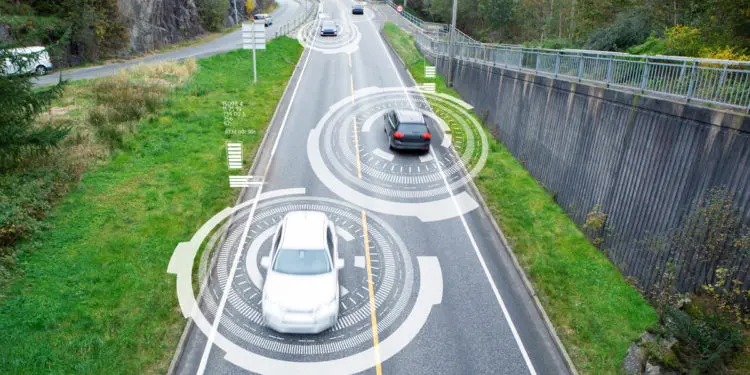Less expensive, computationally less demanding, and impervious to almost all environmental conditions, radar technology offers a compelling advantage in many automotive safety applications. Little wonder, then, that it accounts for more than one third of the automotive collision avoidance sensor market, according to Grandview Research. On the other hand as the usage of radar technology in cars increases, so does the potential for increased levels of interference that can impact detection performance.
Key applications where radar is currently being used are in adaptive cruise control, blind spot detection, forward collision warning, intelligent parking assistance, autonomous emergency braking, and other advanced driver-assistance systems (ADAS).
And its market share is on the rise: The National Highway Traffic Safety Administration (NHTSA) announced that all automakers will supply collision avoidance by 2022, and further development of autonomous vehicles will present even more opportunities.
But as the usage of radar technology in cars increases—and thereby the number of sensors operating in proximity to each other at the same time—so does the potential for increased levels of interference. And interference can impact the very thing that is critical to get right in safety applications: detection performance.
Concern over this specific issue prompted NHTSA to conduct a study on radar congestion. Published in September 2018, the results of the study show that levels of interference based on operation of current systems in congested environments will be significant.
Here’s how it works: Assume, for example, two cars approach an intersection, facing each other. Both cars have a front-looking radar sensor operating in the 76-77 GHz band. Both sensors are expected to send signals in the 76-77 GHz band, and the reflected signals from the objects (metal body of the other car, in this case) come back to each sensor for processing to confirm the detection of the car in the front.
Interference or cross-talk occurs when one sensor captures signals from the other sensor along with its own reflections from the object. If the interference is ignored, the result could be a missed object, false detection, or the manifestation of a ghost target, which is a reflection of the actual target.
The NHTSA report noted that “Up to this point, attention has been paid to making the technology operate, and not much consideration has been given to the mutual impact of the highway infrastructure and safety systems when deployed.”
But that doesn’t mean various strategies are not under active investigation.
Today component suppliers and radar sensor designers are looking at different approaches to detect and mitigate interference. The report noted several, including:
- A technique focused on detecting interference and repairing receiver results in time domain
- Stretch processing, which lowers the systems’ overall signal-to-noise ratio
- Digital Beam Forming, which allows the radar to restrict the receiver’s spatial field of view
“As the number of radar sensors per car increases and the number of cars with ADAS functionality increases, TI also agrees that there would be potential risk of interference or cross talk,” said Sneha Narnakaje, Business Manager and Director of Marketing, Automotive Radar, at Texas Instruments.
Narnakaje noted that there are approaches within region/country specific regulation bodies to deploy radar more efficiently depending on the application. “The FCC has expanded the spectrum available for vehicular radars, to include the entire 76-81 GHz band, with 76-77 GHz regulated for moving vehicles and ADAS functions,” Narnakaje said.
For long range detections and highway conditions, 76-77 GHz could be used, she noted, while for short range detections and urban conditions, 77-81 GHz could be used. “Traffic management or monitoring could use the unlicensed 60 GHz band, so the sensor usage is distributed across frequency bands and the environment becomes less prone to interference or crosstalk. Even the sensor installation orientation on the car will also play role in the interference environment.”
She noted there are also developments in chip architectures targeted at helping to mitigate interference.
TI, for example, said there are performance advantages to using its complex-baseband architecture in Frequency Modulated Continuous Waveform (FMCW) radar systems. ADAS uses this type of sensor, which is less prone (although not immune) to interference due to the continuous waves.
The technology was designed mainly for RF performance reasons, but TI engineers found a way to exploit this architecture to detect interference more accurately and efficiently and deal with it.
And that’s exactly what industry is focusing its efforts on now.
































